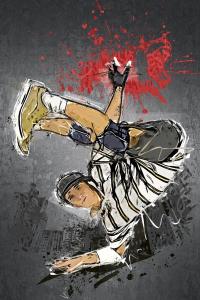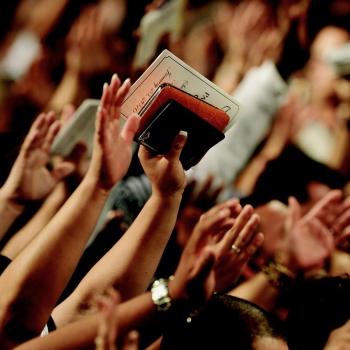
Breaking the Olympic Rings
Most of you have probably been spending a lot of time these last few weeks watching the 2024 Olympic games in Paris. I have. It’s fun to watch and pull for a team, but I must confess that this year I found particular fascination with a new sport–break dancing, or more accurately, breaking.
I don’t suppose it is all that strange for dance to be included in the Olympics. After all, there are artistic gymnastics, rhythmic gymnastics, and artistic swimming, to name a few. But can breaking actually be considered a sport? There’s no denying the physicality: the acrobatic moves, the complex footwork, the risk of musculoskeletal injury, and the necessary training and practice. “Breaking is recognised as an urban sport just like skateboarding and sport climbing, inspired by various dance styles demanding athleticism and coordination.”
Out of curiosity, I set out to discover the facts about breaking. Maybe it will interest you, too.
In her article, “Five Facts About Break Dancing” (April 15, 2022), Isabel Nkuka sums it up this way:
Five Facts About Break Dancing
- Break dancing was first created as a “less lethal” form of fighting between warring African-American street gangs in 1970’s Bronx area of New York City.
- Break dance is one of the four elements of Hip Hop. The four elements are; Dj, Mc, graffiti, and break dancing.
- A B-Boy is a male break dancer.
- A B-girl is a female break dancer.
- The four main movements areToprock (Up rock), Downrock (Six steps), Power moves (windmills, flares), and Freezes (baby freeze).
I visited Dean Treml/Red Bull Content Pool for a breaking vocabulary lesson:
Breaking Vocabulary
Toprock: When breakers are dancing while standing before they go to the floor. Some basic top rock steps are Indian step and Cross step.
Go downs: The moves breakers use to go from top rock down to the floor. Some basic go downs are knee drops or spin downs.
Footwork: When breakers are dancing on the floor, using their hands for support as they move their legs through a variety of footwork steps and patterns. Some basic footwork steps are six-step, three-step and CCs.
Freezes: When breakers go into and hold a solid shape with their body for a few seconds. Some basic breaking freezes are the baby freeze, chair freeze and elbow freeze.
Power moves: When breakers dynamically propel their whole body into a continuous spinning move with rotational force. Examples of power moves are head spins, air flares and windmills.
Tricks: When breakers take a conventional breaking step, freeze or power move and add an unconventional dimension and twist to it. Examples of this are the hopping air chairs, or leg threading while doing hand hops.
Transitions: Transitions are the movements breakers use to connect their footwork, freezes, tricks and power moves. Some basic transitions are sweeps, pretzels and spins.
Cyphers: circles breaker’s form and dance in any time they are getting down together, going one after another with one person in the cypher at a time. These circles can form anywhere and everywhere breakers are dancing – at parties, in clubs and even outside on the concrete. Breakers will also call each other out to battle in a cypher, when there is no time limit or a winner, but just breakers battling until someone decides the battle is over.
Breaking Music
The music, of course, is an important element. “The musical selection for breakdancing is not restricted to hip-hop music as long as the tempo and beat pattern conditions are met. Breakdancing can be readily adapted to different music genres with the aid of remixing. The original songs that popularized the dance form borrow significantly from progressive genres of funk, soul, disco, electro, and jazz funk. A musical canon of these traditional b-boy songs have since developed, songs that were once expected to be played at every b-boying event. As the dance form grew, this standardization of classic songs prompted innovation of dance moves and break beats that reimagined the standard melodies. These songs include “Give It Up or Turn It a Loose” by James Brown, “Apache” by the Incredible Bongo Band, and “The Mexican” by Babe Ruth to name a few.
“The most common feature of breakdance music exists in musical breaks, or compilations formed from samples taken from different songs which are then looped and chained together by the DJ. The tempo generally ranges between 110 and 135 beats per minute with shuffled sixteenth and quarter beats in the percussive pattern. History credits DJ Kool Herc for the invention of this concept later termed the break beat” (Wikipedia, “Break Dancing”).
Breaking the 2024 Olympic Rings
This year the Olympic games welcomed 16 B-Boys and 17 B-Girls from 16 countries to compete for gold, silver, and bronze. The women competed on the first day, the men on the second.
Each round began with a round-robin phase which included four groups of four competitors. The top two in each group advanced to the quarter-finals, followed by the semi-finals, and the battle for the gold..
In the article “Breaking at the Olympic Games Paris 2024: Frequently Asked Questions,” Shintaro Kano discusses how the scoring is done:
“Judges score the breakers based on five categories – musicality, vocabulary, originality, technique and execution. Each category makes up 20 percent of the score. Battles are best-of-three rounds, also known as throwdowns. Each breaker has 60 seconds to complete a routine in a throwdown. Athletes can be penalized for misbehavior.
So, there you go! It’s a brief overview, but perhaps I have pointed you to some answers, especially for those of you who turned on the television only to wonder why an episode of So You Think You Can Dance replaced your Olympic viewing.
Hey, I enjoyed the competition thoroughly.
God bless you, and may you win the gold in your life event!
















